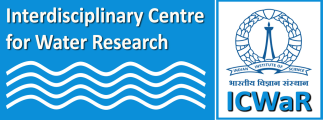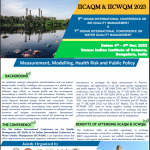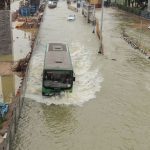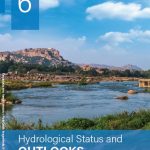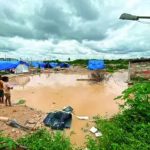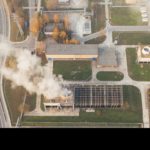Recent Advances in Himalayan Glaciology
Name of the Speaker: Dr Anil Kulkarni
Title of the Seminar: Recent Advances in Himalayan Glaciology [Gallery]
Date and Time: 21st February 2020 (Friday), 4:00 PM
Venue: Lecture Hall, ICWaR
About the speaker: Dr Kulkarni is currently working as a Distinguished Scientist at Divecha Centre for Climate Change, Indian Institute of Science, Bangalore. He is instrumental in developing numerous remote sensing-based methods and models to understand Himalayan Cryosphere. These are widely used to map seasonal snow cover, glacier cover and moraine-dammed lakes. Further, these also are used to estimate glacier mass balance, stream runoff and to understand the influence of climate change on the Himalayan cryosphere. During his initial investigations, Dr. Kulkarni developed a methodology to map Himalayan glaciers using remote sensing data. This methodology was used to prepare glacier inventory of Indian Himalaya, providing information about the distribution of Himalayan glaciers, not available previously to the scientific community. Dr Kulkarni and his team have recently developed a model based on velocity, slope and flow law to estimate the distribution of ice-thickness. This is being used to estimate glacier stored water and mass loss for Himalayan glaciers. In addition, he is working on modelling Glacier Lake Outburst Floods in Himalaya. He also organises two weeks of training programs on Glaciology. Due to his significant contribution in the field of glaciology, he received numerous awards such as National Geosciences award, Polar science and cryosphere and team leader award from ISRO.
Abstract: Himalayan mountain range is one of the major Water Tower of Asia and stores a large concentration of snow and glaciers. Water Towers generate more runoff due to high orographic precipitation and delay release due to storage as snow and Ice. Therefore, water is supplied during the hot and dry season, making many rivers like Indus, Ganga and Brahmaputra perennial. Indus River considered more vulnerable under future climate change scenarios due to large contribution from snow/glacier melt, large population, high water stress and geopolitical conditions. In addition, the livelihood of large Himalayan mountain communities also depends on the availability of water from snow and glacier melt. Therefore, periodic assessment of the state of the Himalayan cryosphere is important. In this lecture, I will give a current understanding of Himalayan cryosphere and future challenges. Recently numerous new techniques and models have been developed to estimate glacier volume, mass loss, potential glacier lake sites, assessment of flash flood from Glacier Lake Outburst Flood and effect of climate change of glacier distribution. I will discuss the significance of these contributions and its impact of water security and livelihood on mountain communities.
Date/Time
Date(s) - 21/02/2020
4:00 pm
